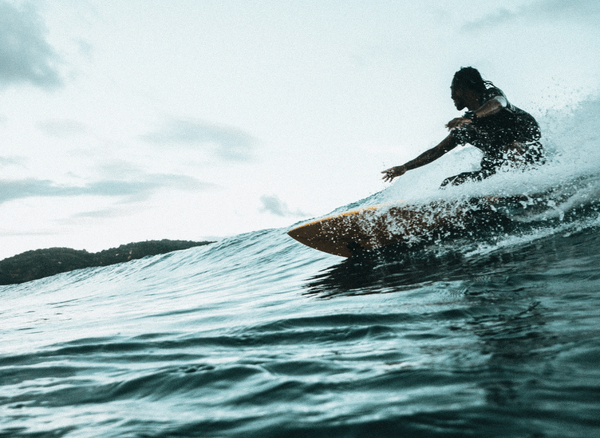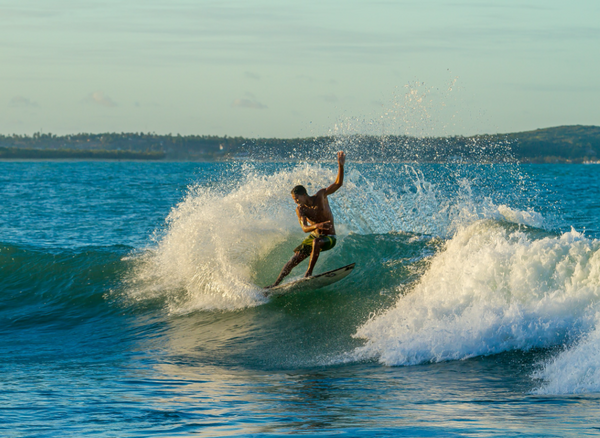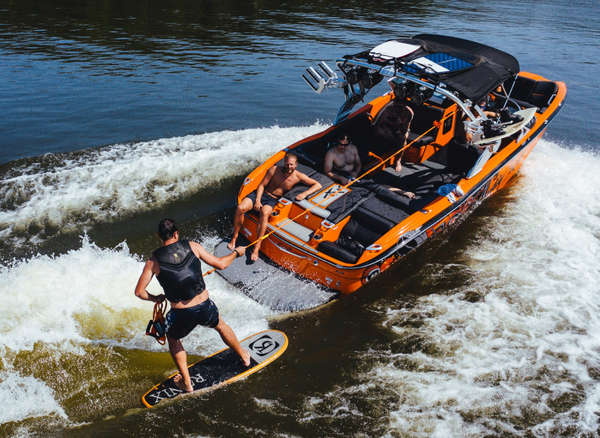Are you tired of the same old water sports like the traditional surfing or wakeboarding?
Do you want to try something unique, challenging, and incredibly fun?
Then, you might want to take foilboarding out for a spin! Don't worry if it sounds intimidating. It's not rocket science, but it's a lot like flying on water.
In this post, we'll introduce you to foilboarding: what it is, how it works, and why you should give it a try. So, let's get started and leave the waves behind!
What is Foilboarding?
Simply put, it's a hydrofoil-based water sport that involves a board, a hydrofoil, and your skills (and lots of practice, of course). The foil is a wing-shaped device that attaches to the bottom of the board.
When you ride the board at a certain speed, the foil generates lift and enables the board to rise above the water. The result? A sensation of gliding or flying above the water surface. Sounds cool, right?
How do foil boards work?
How does the foil generate lift? That's where the magic of physics comes in. The foil lifts by creaing an area of low pressure on the top side and high pressure on the bottom side as it moves through the water. This difference in pressure creates a force that lifts the foil and the board. The foil also stabilizes the board and reduces the drag, allowing you to glide for longer distances at higher speeds than traditional water sports.
Now, you might ask, why should you bother with foilboarding if you're already a skilled surfer or wakeboarder? Well, for one thing, it's a whole different level of challenge and thrill. You need to master a new set of skills, such as maintaining balance and control, adjusting the foil angle, and reading the water conditions. You also need to be mentally focused, physically fit, and patient. But when you finally get it right, the feeling of flying is like nothing else.
Another reason to try foilboarding is that it's a versatile sport that you can practice in many water bodies and conditions. You can ride the hydrofoil board in flat water, choppy water, and even ride waves (even small waves will work just fine). You can also use different foil setups to suit your level and preferences, such as shorter or longer masts, larger or smaller wings, and different materials. The possibilities are endless!
However, a word of caution: foilboarding is not for everyone, at least not at first. It takes time, practice, and guidance to learn the basics and progress at your own pace. To get started, you might want to take a lessons who to learn the proper techniques and safety rules. You also need to invest in a board thats right for your body size, skill level, and the water environment. Foilboarding can be expensive, but it's worth the investment if you're serious about flying on top of water.
Types of Foilboarding
If you're an experienced foil surfer looking for your next adrenaline rush, or a curious newbie wanting to try it out, you've come to the right place. There are many different types of ways you can fly across the body of water. So buckle up and get ready to take your board to another level of fun. The following are just a few ways to experience the thrill of foil boarding.
Surfing
Surfing has been around for centuries, but foiling has added a new dimension to the sport. A foil surfboard has a hydrofoil attached to the bottom of it. The rider uses their bodyweight and the power of the waves to control the foil and glide above the water. Surf foiling is a challenging and exhilarating form of foil surfing that requires a lot of skill and practice.
Wake Foil Boarding
Wake foil boarding is a new trend that's taking the wakeboarding world by storm. It's similar to kitesurfing, but instead of using a kite, you ride the board behind a boat or jetski. Wake foil boarding combines the thrill of wakeboarding with the excitement of foiling. The goal is to ride the foil as high as possible while performing tricks and stunts.
Kiteboarding
Kiteboarding is one of the most popular and exciting forms of foilboarding. It involves riding a board with a foil underneath while holding onto a kite. Kiteboarding is all about harnessing the power of the wind to gain speed and height. The key to mastering kiteboarding is understanding how to control the kite and how to use the foil to your advantage.
Efoil
Efoil is a newer form of foilboarding that involves using an electric motor to power the board. Efoil allows riders to control the speed and height of the board with a remote control while gliding above the water. Efoil is a fun and unique way to experience the thrill of foiling without having to rely on the wind or even the worst wave.
Other types of Foil Surf
Hold on to your hydrofoil board and get ready for a ride in more ways to get your foiling on! Whether you're into being pulled by a pal, a bungee, or some seriously gusty wind, there's a foilboard sport out there for everyone. Kiteboarding, Windfoiling, Wingsurfing, SUP, running, biking, jet ski, bungee pulling- you name it!
But hey, don't just take our word for it. There are some seriously cool types of boards out there. So strap in, choose your ride, and enjoy the thrill of hydrofoiling in style!
Whether you're into regular surfing, kitesurfing, wakeboarding, efoiling, windfoiling, wingsurfing, or SUP, there's a foil activity that will suit your needs.
So is foil surfing difficult? Before you dive in, make sure you understand the basics of foilboarding, such as controlling the foil and adjusting to the wind and water conditions. With practice and determination, you'll soon be flying high above the water and experiencing the rush of foiling like never before. So grab your foil surfboard, get out there, and let the foiling adventures begin!
Learn more from our other rad articles:









